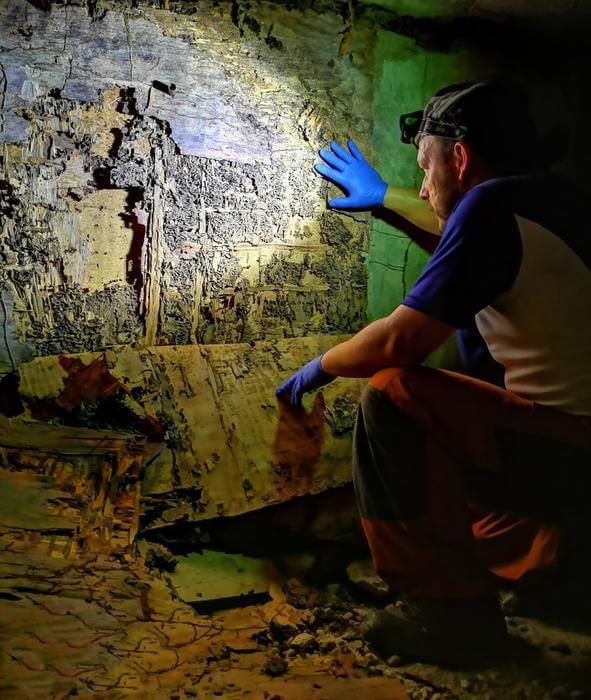BRUSSELS, Belgium — Imagine a world where tiny, wood-devouring insects thrive in our changing climate, hitching rides on boats and shipping containers to invade new territories. This might sound like the plot of a science fiction film, but it’s the stark reality we face as highly-invasive termite species spread across the globe.
Termites play a crucial role in tropical ecosystems as decomposers and soil engineers. However, some species have developed an insatiable appetite for the wood used in our homes, furniture, and infrastructure, causing billions of dollars in damage each year. Now, a new study by researchers Edouard Duquesne and Denis Fournier from the Université libre de Bruxelles in Belgium reveals that climate change, urbanization, and increased connectivity are creating the perfect storm for these destructive pests to flourish.
The research team focused on 10 of the most invasive termite species, including the infamous Formosan subterranean termite and the West Indian drywood termite. Using sophisticated computer models, they investigated how factors like temperature, rainfall, land use, and human activity influence where these termites can survive and thrive.
“A solitary termite colony, nestled within a small piece of wood, could clandestinely voyage from the West Indies to your Cannes apartment. It might lurk within furniture aboard a yacht moored at the Cannes Film Festival marina,” the researchers explain in a media release. “Mating is coming. Termite queens and kings, attracted by lights, may initiate reproduction, laying the groundwork for new colonies to conquer dry land.”
Traditionally, scientists have relied on climatic variables like temperature and precipitation to predict the distribution of termites. However, Duquesne and Fournier took their analysis a step further by incorporating human factors, such as urban development and global connectivity through trade and transport networks. This novel approach painted a more comprehensive picture of the potential termite invasion in the coming decades.

The results, published in NeoBiota, were alarming. The models showed that most of the 10 invasive termite species could find suitable habitats in highly-urbanized and well-connected areas within tropical, subtropical, and even some temperate regions. As our world becomes warmer and more interconnected, the risk of termite invasions skyrockets, particularly under a “business as usual” scenario where fossil fuel use remains high.
But what makes these termites such successful invaders? The answer lies in their unique biology and adaptability. All 10 species share three key characteristics that allow them to hitchhike across the globe and establish new colonies in foreign lands.
First, they are all wood-eaters, which means they can easily find food wherever wood is present – which is virtually everywhere humans live. Second, they have the ability to nest within a single piece of wood, making it easy for them to hide in furniture, boats, and shipping materials. Finally, these termites can produce “secondary reproductives” that can quickly multiply and spread, even from just a small piece of infested wood.
As if their biology wasn’t enough, human activity is inadvertently giving these termites a helping hand. The study found that urban development, accessibility to cities, and the movement of boats and shipping containers were among the most important predictors of termite spread, second only to temperature. In our globalized world, a termite-infested piece of furniture can travel from one continent to another in a matter of days, allowing these pests to bypass natural barriers that would have otherwise limited their spread.
So, what does this mean for the future? The researchers warn that without urgent action to curb climate change and rethink our globalized economy, we could be facing a termite invasion of unprecedented proportions. As temperatures rise and cities expand, these insects will find new footholds in regions that were once inhospitable to them. Coastal cities, ports, and other hubs of global trade will be particularly vulnerable.
However, all is not lost. Armed with the knowledge from this study, policymakers, city planners, and pest control experts can develop targeted strategies to monitor, prevent, and control termite invasions. This may involve stricter regulations on the movement of wood products, improved quarantine measures, and early detection systems in high-risk areas.
As individuals, we also have a role to play. By being mindful of the furniture and wood products we buy and transport, we can help limit the spread of these pests. Supporting sustainable urban development and reducing our reliance on fossil fuels can also help slow the march of these invaders.
The termite invasion is a stark reminder that in our interconnected world, the actions we take in one corner of the planet can have far-reaching consequences. As we grapple with the challenges of climate change and globalization, it’s clear that we need a coordinated, global response to protect our homes, our cities, and our planet from these tiny but formidable foes.

